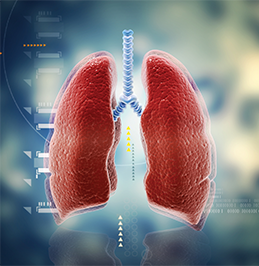
Image Credit: Creations/SHUTTERSTOCK.COM
Researchers from California and Texas have identified a new genetic syndrome that is characterized by systemic autoimmune disease of the lung and joints. The syndrome is driven by a genetic variant of a vesicular transport protein and is the first documented association between intracellular transport and autoimmunity.
Levi B. Watkin, PhD, postdoctoral fellow at Baylor College of Medicine in Houston, Texas, and colleagues published the results of their extensive research online April 20, 2015, in Nature Genetics.1 They used the latest whole exome sequencing techniques to identify genetic variants associated with an autoimmune syndrome of severe lung disease and arthritis. The study represents the first time that the hereditary disorder has been diagnosed as a single syndrome. The research also revealed a novel biological mechanism underlying autoimmune disease.
Finding Patients
The project began when Anthony K. Shum, MD, assistant professor of Medicine at University of California, San Francisco (UCSF) and co-senior author of the study, learned of a woman admitted to the emergency department at UCSF with pulmonary hemorrhage.
“For me, it started with a single family and actually a patient encounter,” explained Dr. Shum to The Rheumatologist. His initial interest in the patient stemmed from his desire to identify an autoimmune disease that affected the lung and determine its underlying genetic cause. As a young investigator, he had had his laboratory for just three years and he felt that identifying such a genetic cause would prove a good focus for his laboratory, especially since monogenetic disorders have been quite useful for identifying biological mechanisms underlying pathology. He also felt that there could be far-reaching implications for such a finding because, “there clearly is this link between arthritis and lung disease.”
Dr. Shum spoke with the patient’s mother in the hospital corridor and learned that a distant cousin had a two-and-a-half-year-old daughter under treatment for pulmonary hemorrhage at a nearby hospital. The mother did not actually know the cousin or the cousin’s daughter, and did not hear about the sickness directly from family members. Instead, she heard about the similar disease via mutual Facebook friends. Dr. Shum visited the child and learned that she had pulmonary hemorrhage and arthritis. He knew the identification of two related patients with similar symptoms “was going to significantly improve our chances of finding a gene.” Dr. Shum wanted to further increase his odds, however, so he and a team of UCSF medical students began to search for other affected family members. They were able to identify a distant relative in another state who had similar symptoms.
Finding Collaborators
Dr. Shum also reached out to physicians at other institutions to see if a similar cluster of patients had been identified elsewhere. Co-senior authors Jordan S. Orange, MD, PhD, director of Texas Children’s Hospital Center for Human Immunobiology, and James R. Lupski, MD, PhD, Cullen Professor of Molecular and Human Genetics at Baylor, contacted him with reports of similar cases, and the researchers decided to work together. When they pooled their patients, the group had a total of 20 affected individuals in five unrelated families who appeared to have a mendelian syndrome of autoimmunity with high-titer autoantibodies, inflammatory arthritis and interstitial lung disease. The patients first presented with disease at approximately age 3 years, although there was a range of 6 months to 22 years. The investigators were also intrigued by the fact that several additional members of the family had a diagnosis of rheumatoid arthritis. The patients were receptive to the physician efforts and expressed pleasure that their rare disease was not only on the path to recognition, but also that investigators were seeking to understand the syndrome and develop treatment options.
Implication of Chaperone Protein
What the researchers found surprised them. The genetic analysis identified a region of the genome encoding the ubiquitously expressed gene for COPA (coatomer subunit α), a resident chaperone protein in the endoplasmic reticulum (ER). Between them, the affected patients had four unique harmful variants in the COPA gene that all affected the same functional domain: a 14-residue region of the WD40 domain of COPA. The autosomal dominant COPA mutation was inherited with a normal copy of COPA. Genetic analysis of the family was confounded by the fact that the dominant mutation has incomplete penetrance. Thus, patients do not need to have a clear family history in order to indicate that a COPA mutation is important in their pathology.



